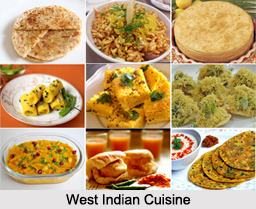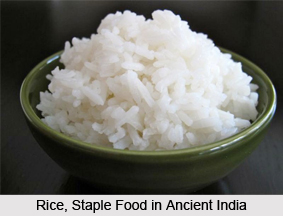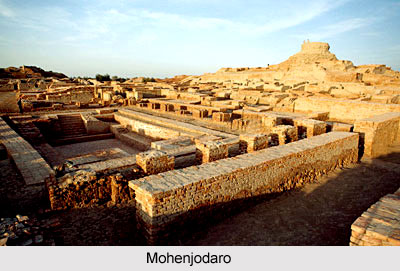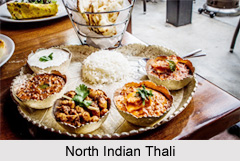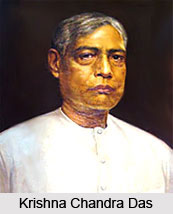 The 19th century renaissance in Bengal brought about a dramatic change in the lives of Bengalis in Calcutta. It is during this time that Calcuttans witnessed the birth of several sweetmeat shops. Four famous establishments of sweets grew in the heart of Calcutta during this period. These are Bhim Nag, K.C Das, Dwarika Ghosh and Ganguram.
The 19th century renaissance in Bengal brought about a dramatic change in the lives of Bengalis in Calcutta. It is during this time that Calcuttans witnessed the birth of several sweetmeat shops. Four famous establishments of sweets grew in the heart of Calcutta during this period. These are Bhim Nag, K.C Das, Dwarika Ghosh and Ganguram.
Bhim Nag had patronized sandesh during those days. He boasted of an elite clientele of J.C Bose, Meghnad Saha, P.C Ray and Dr. Bidhan Chandra Roy. Nag had also invented a special dish to mark the birthday celebrations of Lady Canning. It was named "Ledikeni" in honour of the Lady and it is very famous till date.
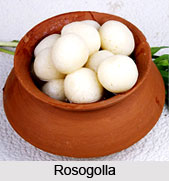 Rassagolla, one of the most popular sweetmeats in India, originating from the Eastern part of the country, has an interesting modern history. This particular dessert is mockingly attached to Bengalis. This sweet can be found in almost all Eastern Indian households, while global malls sell it like hot cakes. Very few people know that Rasagolla was created in the temple town of Puri in the eastern state of Orissa, where it has been eaten since medieval times. The best rasagollas in Orissa are from the town of Salepur, near Cuttack. Another variety made at Pahala near Bhubaneswar is also equally famous. "Rasagolla" is also known to be the national sweet of India.
Rassagolla, one of the most popular sweetmeats in India, originating from the Eastern part of the country, has an interesting modern history. This particular dessert is mockingly attached to Bengalis. This sweet can be found in almost all Eastern Indian households, while global malls sell it like hot cakes. Very few people know that Rasagolla was created in the temple town of Puri in the eastern state of Orissa, where it has been eaten since medieval times. The best rasagollas in Orissa are from the town of Salepur, near Cuttack. Another variety made at Pahala near Bhubaneswar is also equally famous. "Rasagolla" is also known to be the national sweet of India.
The fine art of making rasagollas was eventually transferred to Kolkata, West Bengal. Nobin Chandra Das is said to have introduced the delightful taste of sponge rassagollas to the people of Calcutta. He set up a shop in Baghbazar and the people there used to jokingly say,`Baghbazarer Nobin Das rossogollar Colombus`(Nobin Das of Baghbazar is the Colombus of Rassogolla.).After rassagolla, Nabin Das improved the already existing sandesh. From granular and course variety he succeeded in making it into a smooth paste. Then K.C Das, the son of Nobin Das and Sharadacharan Das grandson of Nobin Das joined hands and opened another shop by the name of K.C Das and then they invented the canned variety of the highly perishable rasagullas and it became an instant hit. Sharadacharan also invented "rasamalai".
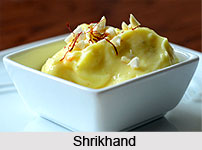 The third famous shop in Calcutta was of Dwarika Ghosh. He claimed his shop to be the largest in the whole of Bengal. He advertised with catchy slogans. Soon his marketing and quality of sweets did the trick and in no time, he recorded maximum sales recording 20 lakhs. Another, 104 year old, sweet shop called Ganguram and Sons was opened by Ganguram Chaurasia. The quality of Ganguram`s `Mishti Doi` (sweetened curd) is unmatched. His family members even claim that Lord Narayana, had eaten curd in the disguise of a beggar and had even given medicines to Ganguram for his diminishing eye sight. Now Ganguram has ten branches all over Calcutta.
The third famous shop in Calcutta was of Dwarika Ghosh. He claimed his shop to be the largest in the whole of Bengal. He advertised with catchy slogans. Soon his marketing and quality of sweets did the trick and in no time, he recorded maximum sales recording 20 lakhs. Another, 104 year old, sweet shop called Ganguram and Sons was opened by Ganguram Chaurasia. The quality of Ganguram`s `Mishti Doi` (sweetened curd) is unmatched. His family members even claim that Lord Narayana, had eaten curd in the disguise of a beggar and had even given medicines to Ganguram for his diminishing eye sight. Now Ganguram has ten branches all over Calcutta.
Another Indian dessert that blends with the Hindu culture is the Payasam (or Kheer as it is called in Hindi). This dessert has been an essential dish throughout the history of India, being usually found at ceremonies, feasts and celebrations. In Southern India, it is believed that a wedding is not fully blessed if Payasam is not served at the wedding feast.
In the temples of Guruvayoor and Ambalappuzha, the best and most popular Payasam dishes are found. In the Ambalappuzha temple, Payasam is served as part of a tradition, based on an ancient legend The legend states that Lord Krishna took the form of an old sage and challenged the king who ruled over that region to a game of chess. Being a true chess player the king gladly accepted the sage`s invitation. When the king asked the sage what did he want in case he won the game, the sage replied that he wanted an amount of rice grains for each square of the chess board, each pile having double the number of grains than the previous pile. Therefore, the first square would have only one grain of rice, the second would have 2 grains and the third would have 4 grains, each pile growing twice the past pile of rice grains. Hearing this request, the king was shocked that the sage wanted only what he thought were a few piles of grain, when he could have asked for his whole kingdom or the riches that he held.
The king lost, so he started placing grain piles on each square, starting with only one grain. He soon realized that the sage`s demand was not as small as he had thought it to be. By the 40th square or so, the entire kingdom`s rice reserve had finished and when he got to the last square he calculated that he would have to pay the sage 18,447,744 trillions of tons of rice, which was not possible for the King to pay back at a time. The sage then revealed his true form, that of Lord Krishna, and said that the king did not have to pay the debt then or at a go but the king would have to serve Payasam free of cost in the temple of Ambalappuzha, to pilgrims. The tradition of freely serving Payasam in Ambalappuzha is still continued.
Western Indian Sweet is also famous for one of the most delicious desserts found throughout the history of Indian food: the Shrikhand. The Shrikhand is a creamy dessert made out of strained yogurt, from which all water is drained off, leaving the thick yogurt cream. Exotic dry fruits and fresh fruits like mangoes only enhances the delightful taste of Shrikhand. This great dessert is one of Western India`s most popular and traditional dishes, since it has ancient roots in the Indian cuisine. Modak is also a very famous sweet in Western India. It is made during Ganesh Chaturthi. There are many varieties of Modak.
